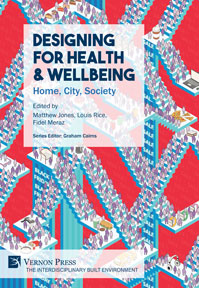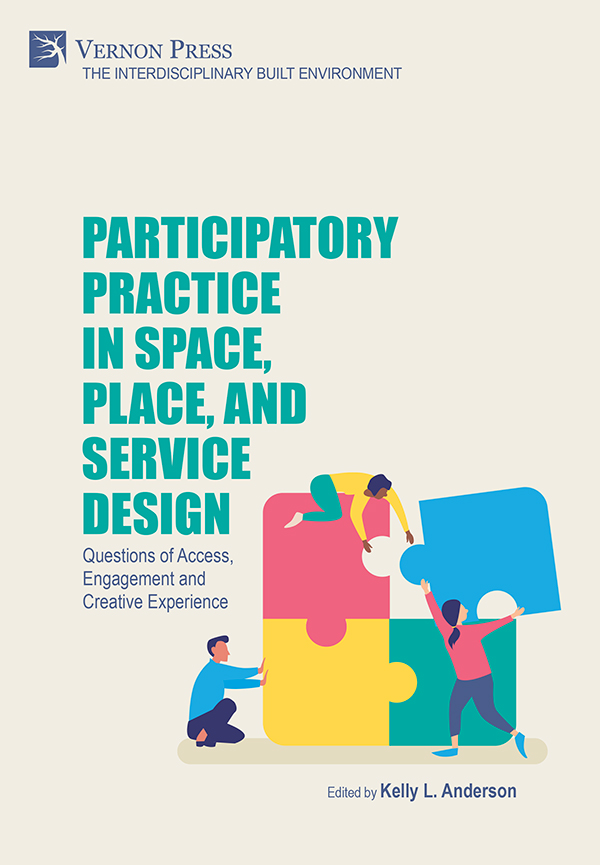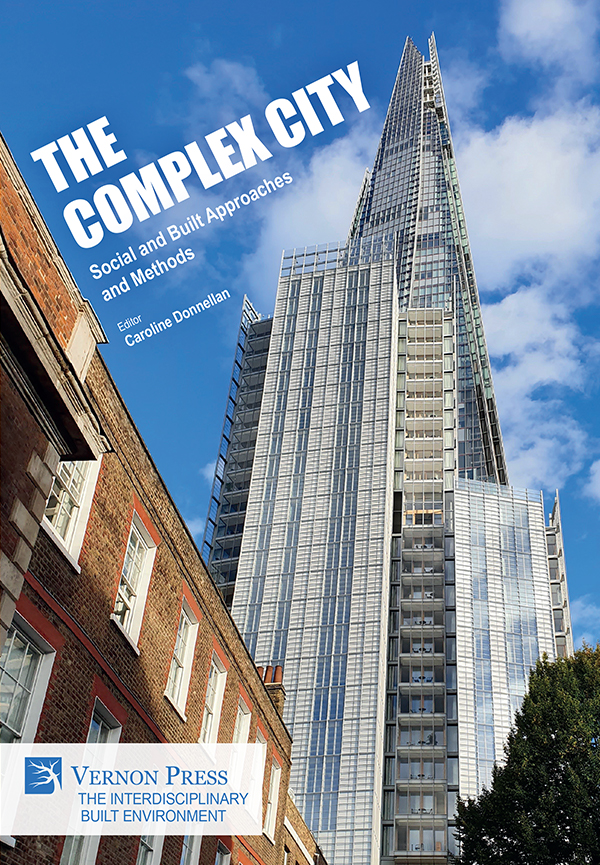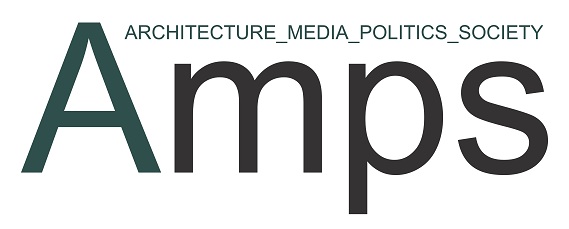New Series: The Interdisciplinary Built Environment
The built environment from a cross disciplinary social, cultural and political perspective.
This series is developed in collaboration with series editor Graham Cairns and the research organisation AMPS (Architecture, Media, Politics, Society)
Titles in the Series
 |
The first book in this series is now available: Designing for Health & Wellbeing: Home, City, Society, edited by Matthew Jones, Louis Rice and Fidel Meraz. Rapid urbanization represents major threats and challenges to personal and public health. The World Health Organisation identifies the ‘urban health threat’ as three-fold: infectious diseases, non-communicable diseases; and violence and injury from, amongst other things, road traffic. Within this tripartite structure of health issues in the built environment, there are multiple individual issues affecting both the developed and the developing worlds and the global north and south. |
|
|
|
 |
The second book in this series is now available: Participatory Practice in Space, Place, and Service Design: Questions of Access, Engagement and Creative Experience, edited by Kelly L. Anderson. 'Participatory Practice in Space, Place, and Service Design' is premised on a belief in the importance of participatory practices in finding creative solutions to the plethora of problems we face today. It argues that engaging professions with the public in mutual exploration, analysis, and creative thinking is essential. It not only ensures better quality products, places, services, and a greater sense of civic agency but also facilitates fuller access to them and the life opportunities they can unleash. This book offers a uniquely varied perspective of the myriad ways in which participatory practices operate across disciplines and how they impact the worlds and communities we create and inhabit. This book suggests that participatory practices are multi-disciplinary and relevant in fields as diverse as design, architecture, education, health care, sustainability, and community activism, to name a few of those discussed here. How do designed objects and environments affect wellness, creativity, learning, and a sense of belonging? How do products and services affect everyday experience and attitudes towards issues such as sustainability? How does giving people a creative voice in their own education, services, and built environments open up their potential and strengthen identity and civic agency? Addressing these questions requires a rethinking of relations between people, objects, and environments; it demands attention to space, place, and services. |
|
|
|
 |
The third book in this series is now available: The Complex City: Social and Built Approaches and Methods, edited by Caroline Donnellan. 'The Complex City: Social and Built Approaches and Methods' explores different ways of understanding the city. The social city approach proceeds from the ground-up, it focuses on human interactions shaped by economic and environmental processes. The built city method looks through a top-down lens, examining policy and planning for buildings and infrastructure, including utilities and energy networks. This volume is different from other city anthologies in that it explores them through their differences, by presenting each chapter in one of the two categories. While there is invariably an overlap between the two areas, they are distinct positions. In doing so the book identifies how, despite their often adversarial approaches, they both belong to the same city. As essential components of the city they should not necessarily be resolved, as it is in this friction where creativity and innovation happens. 'The Complex City: Social and Built Approaches and Methods' is concerned about the ideas and solutions that they both offer. The book’s originality stems from this duality, and from its recognition that cities are living, organic, protean places of opportunity, crisis, conflict and challenge. The chapters demonstrate the complexity of cities as a set of ideas concerning what they engender, how they function and why they continue to act as a catalyst for different kinds of human activity. They explore issues of socio-political import and questions of the city as a physically constructed space. The themes are diverse and include the inception of the city as a place of competition to centres of regeneration and urban withdrawal. They cover a range of city and urban regions from Athens to Wellington from site specific singular perspectives to comparative assessments. The questions they raise include how do we inhabit urban areas, how do we make plans for them, and how do we, at times, ignore them entirely. |
Series Background
The built environment is typically understood to involve all aspects of our cities - from the scale of individual buildings (architecture) to urban design and planning. The disciplines involved in the research, design and construction of the built environment are wide ranging. They include sociologists, human geographers, public health professionals, architects, planners, and urban designers, to mention just a few.
Sociologists study the life of communities in our cities, towns and neighbourhoods. Human geographers research issues ranging from into the migrations of people from rural to urban to the socio-political settings and the patterns of life and activity that characterise cities across the world. Public health professionals today continue the work of over two centuries in their field concerned with the city as an important site for public health debates. Examples in recent years include the Healthy Cities initiative developed by the World Health Organisation and multiple governmental and NHS projects to promote notions such as the ‘walkable city’, not to mention the health, community and social agenda promoted by the UN Habitat programme.
All of this research and activity of course happens alongside, and in collaboration with, those academics and professionals engaged in the built environment in more traditional ways. Architects form example have long engaged in designing buildings while working with social groups and communities on ‘community design’ projects and collaborating with the public to create more ‘human’ city environments. Urban planners obviously work with policy makers and architects directly, but are also now fully embedded in community participation exercises involving human geographers and sociologists. At an even larger regional planning level these issues are linked to government policy of community regeneration and a broader narrative on public health and healthy living that encourages active lifestyles and thus, walkable and bicycle friendly city streets.
The context for a cross disciplinary social, cultural and political analysis of the built environment across a book series is not only clear and deeply rooted, it is obviously needed and has a massive audience.
Series Rationale
The built environment is an inherently interdisciplinary phenomenon. However, currently, this reality is only partially reflected in literature that periodically explores specific aspects of this interdisciplinary field, but has not yet developed a coherent platform on which to explore the full range and depth of the cross disciplinary nature of life in our cities, their physical infrastructure, their planning policies, health implications and community bonds. As a result, there is a need to develop a platform that supports research into the built environment of cities across disciplines such as sociology, human geography, community and political studies in a coherent and interconnected way.
In serving this role, the series will make a major contribution to the most embedded field of built environment studies (architecture, urban design, planning) and make significant contributions to those fields that inevitably engage with it in the course of their own specific studies (such as sociology, human geography, public health and community studies etc).
The series promises to become a fundamental reference point to scholars across disciplines in the UK and further afield, giving multiple disciplines a platform to interconnect and learn from each other. It is expected to establish a clear interdisciplinary definition and reference point for the multiple perspectives and approaches to research in, and related to, the built environment.
Current Plans
The planned series will be built up sequentially by developing a single interdisciplinary book followed by another, each one drawing a coherent set of authors together from a specific selection of disciplines. The common denominator each time will be the focus of the built environment, and thus a core number of academics from those disciplines: architecture, urban design, spatial design. For example, first planned volume will combine the work and research of academics from sociology and human geography with that of architects, planners and urban designers researching related themes. This would be followed by a book bringing together the work of those in the fields of public health and community development with architects, planners and urban designers researching related themes. Each book will draw on materials from a range of sources, will have a coherent theme but will be interdisciplinary. Over time, the whole series will incorporate under its umbrella a rich but coherent variety of interdisciplinary books centred on the common thread of the built environment from a social, cultural and political perspective.
How to Submit a Proposal
Please submit one-page monograph proposals at submissions@vernonpress.com including an annotated summary/motivation, a short biographical note and (if applicable) a list of similar titles. More information on what we look for in a proposal is available on our website.
About the Series Editor
Dr Graham Cairns, UK, has taught at Universities in the United States, Spain, the UK, Mexico, South Africa and Gambia. He has worked in architectural studios in London and Hong Kong and ran a multi-media performing arts company, Hybrid Artworks. He founded a non-profit research group, AMPS, which has set up an international consortium of universities with research areas in the built environment. The author and editor of eight books, he has presented papers at international conferences and has published on architecture, urban design, film, interior design and advertising. Currently, he is honorary Senior Research Associate at the Bartlett School of Architecture, UCL and Visiting Fellow at Columbia University, New York.
This proposal is due on May 7th 2024.
Page last updated on December 14th 2023. All information correct at the time, but subject to change.


